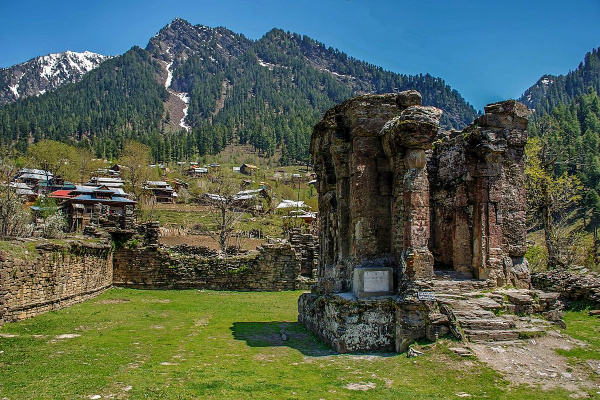As Prime Minister Narendra Modi finally performed the Bhoomi Pujan (land worship) ceremony at Ayodhya today, he was creating history and ceremonially calling curtains on the longest battle for the rightful place of Dharma’s greatest icon in his own land.
The echo of ‘Jai Siya Ram’ is heard today across the world, said PM Modi as he began his charged speech.
And the extant of the inclusive participation in this holy task was summed up as he said , ‘From Kanyakumari to Kheer Bhavani, from Koteshwar to Kamakhya, Jagannath to Kedarnath, From Somanath to Kashi Vishwanath, From Sametshrikhar to Shravanabelagola, from Bodh gaya to Saranath, From Amritsar Saheb to Patna Saheb, from Andaman to Ajmer, from Lakshwadweep to Leh, today the whole of Bharat is ‘Ramamay'”.
He went on to describe the global presence and appeal of Ram which almost recreated the map of the ancient Bharathakhanda of Jambudweepa in the minds of the audiences.
He also mentioned that the pious task of the construction of Ram Mandir has been strengthened by the soil of various holy shrines and sites from across the country and the water from various holy rivers.
One such shrine whose soil has now become a part of the historic bhoomi pujan today on which will be installed the largest spectacle of Dharma,is that of the Sharada Peeth which is in present day Pakistan-occupied-Kashmir.
The soil from the ancient shrine which now lies in the disputed territory was sent by the Save Sharada Committee through the Vishwa Hindu Parishad for the bhoomi pujan ten days ago.

Along with the soil of other 11 shrines from Delhi, this pot of soil and flowers from the shrine were handed over by the Convenor of the Save Sharada Committee, Ravinder Pandita, to the VHP on 25 July.
“I also sent a pot of soil to the priests and I am glad it has now been part of the bhoomi poojan ceremony that was held at Ayodhya today” said Pandita, after the ceremony to Swarajya.
The soil had been procured by him from members of the civil society in the region multiple times since 2016, says Pandita, who hails from Kashmir and has been living in New Delhi, fighting for the Sharada cause for decades now.
“Just like the Ayodhya issue, the shakti sthal of Sharada peeth too is a very old issue and so if the former could get solved, this should also be solved,” says Pandita, hoping that access to the shrine would someday soon be possible.
“If I could visit Kartarpur which I did last year, I should also be able to go visit the Sharada Peeth,” he says reiterating his long pending dream.
The ruins of the Sharada Peeth temple. (Photo by Mudabbir Maajid via Wikipedia)
The Sharada Peeth, the seat of learning, lies in what is today Pakistan-occupied-Kashmir. And the last time an ‘Indian’ undertook a yatra (pilgrimage) to the shrine was in 1948 when Swami Nand Lal, a sage from Kashmir, who initially had his ashram at Sharada town, visited it.
He had to move his ashram from Sharada to Tikker village after the Partition, and is said to have also brought with him some idols, which are said to be found even now at Devibal at Baramulla.
This shrine is about 207 kilometres north of Muzaffarabad in PoK and is located near a picturesque confluence of the Kishanganga river (Neelum River) and the Madhumati stream.
It is surrounded by snow-clad peaks of the Sharada and Narada hills of the Nanga Parbat range.This shrine is said to be one among the 18 Maha Shakti Peethas, or important centres of Devi worship.
Based on the tale that the Shakti Peethas are significant centres of Shakti worship, consecrated at spots where different parts of Sati’s body fell when Shiva went around carrying it, the Sharada shrine is believed to be where her right hand fell.
Source: Swarajya mag
image Courtesy: Wikimedia
You may also like
-
India Can’t Afford to Remain Stagnant at this Juncture, Says PM Modi; Asks People to Buy Locally-Made Goods
-
Stolen Artefacts to be Returned to India from Scotland Museums
-
Netaji’s Hologram Statue at India Gate
-
10th Century Stone Idol of Goat Head Yogini IllegallyRemoved from A Temple in Lokhari, Banda, UP Being Returned to India
-
UNESCO Inscribes ‘Durga Puja in Kolkata’ on the Representative List of Intangible Cultural Heritage of Humanity
